The Economics and Statistics Division maintains archives of previous publications for accountability purposes, but makes no updates to keep these documents current with the latest data revisions from Statistics Canada. As a result, information in older documents may not be accurate. Please exercise caution when referring to older documents. For the latest information and historical data, please contact the individual listed to the right.
<--- Return to Archive
For additional information relating to this article, please contact:
January 25, 2018EMPLOYMENT, EARNINGS AND HOURS, NOVEMBER 2017 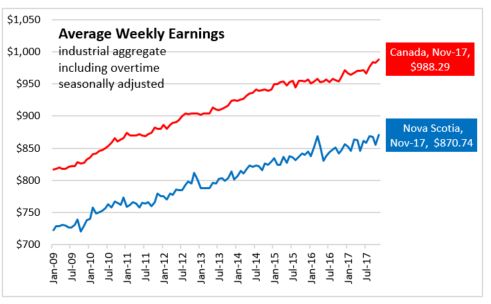
Nova Scotians' average weekly earnings (including overtime, seasonally adjusted) increased by $15.09 per week (1.8 per cent) from October to $870.74 in October. Average weekly wages are 2.8 per cent higher than in November of last year. Canadians' average weekly wages were up 0.6 per cent from October to $988.29 in November, up 2.8 per cent from the same month in 2016.
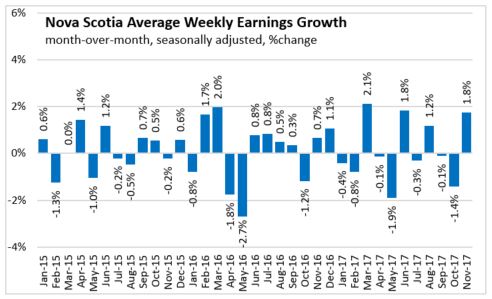
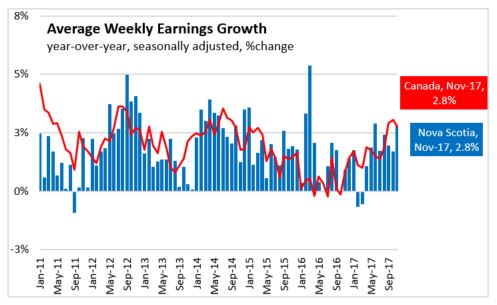
Changes in average weekly earnings reflect wage growth, changes in the composition of employment by industry/occupation/experience; and average hours worked per week.
Across the country, monthly average weekly wages were up 0.6 per cent, reflecting increases in all provinces except BC, which declined 0.3 per cent month to month. Comparing the latest results with November of 2016, all provinces saw increases in average weekly earnings, the largest increase in percentage terms occurring in Quebec (+3.9%).
Through the first eleven months of 2017, average weekly wages have been growing fastest in Quebec, Manitoba and BC. In year to date terms, Nova Scotia's average weekly wages have averaged 1.5 per cent above the levels reported for the same period in 2016.
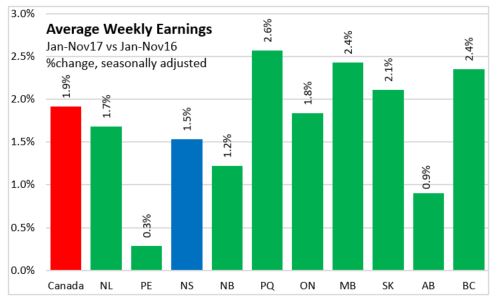
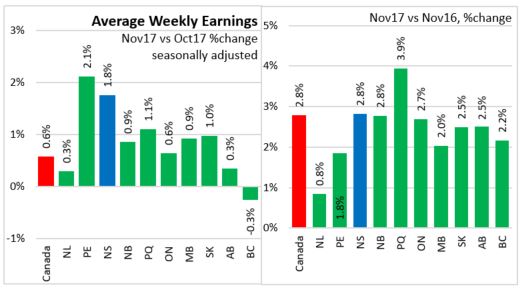
Average weekly earnings are up 2.0 per cent in Nova Scotia's goods producing sectors, comparing the first eleven months of 2017 with the same period of 2016. Growth in goods sector wages were led by the construction sector while manufacturing wages were flat. Service sector earnings were up more slowly at 1.4 per cent YTD. Service sector earnings were up faster in management, administrative/support, finance/insurance, personal/repair (other services), transportation, education and health care and accommodations and food services. There have been declines in average weekly earnings in wholesale/retail trade, information/culture and real estate/rentals.
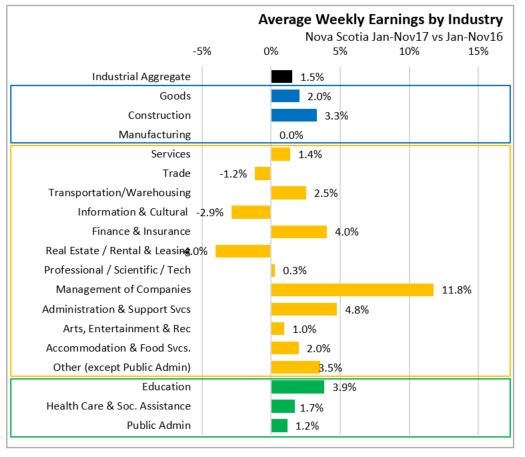
EMPLOYMENT
Nova Scotia had 407,015 payroll employees in November, a 0.4 per cent decrease from October, and a 0.8 per cent increase from levels observed in November of last year. Canada had 16.37 million employees, up 0.1 per cent from October, and 2.0 per cent above levels observed in November 2016.
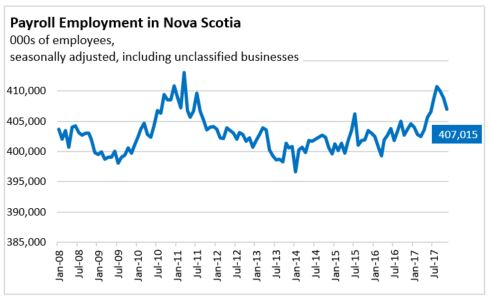
Nova Scotia's payroll employment has been trending upwards since 2014. Year to date average estimates for 2017 are 1.0 per cent higher than the first eleven months of 2016.

Payroll employment is up 1.9 per cent across Canada (comparing the first eleven months of 2017 with the same period of 2016). The fastest payroll employment growth has been observed in Prince Edward Island, BC, and Ontario. Nova Scotia's payroll employment is up 1.0 per cent (YTD) over the first eleven months of 2016.
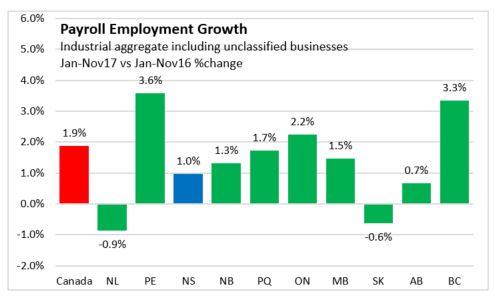
REFERENCE TABLES - YEAR-TO-DATE AVERAGE
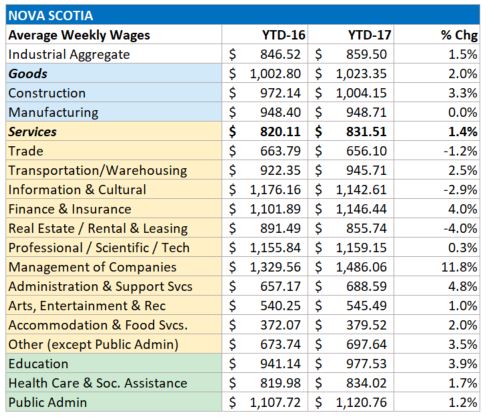
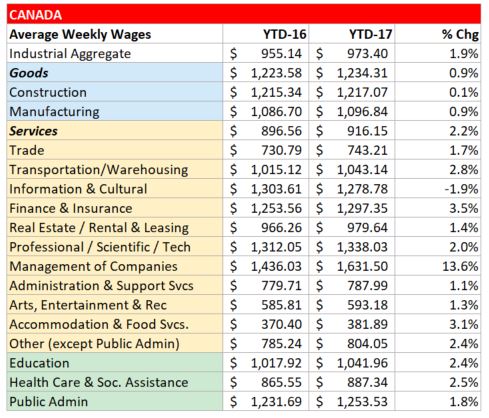
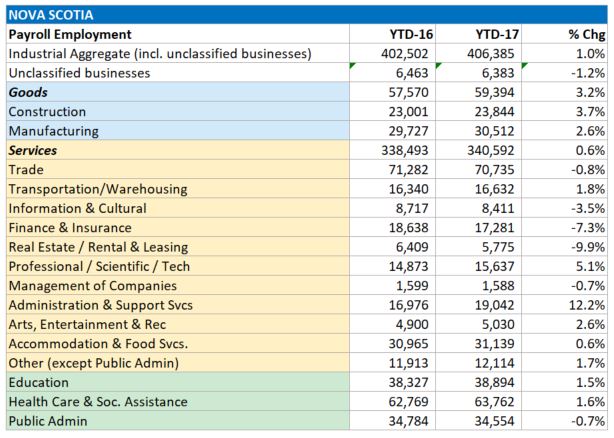

Source: Statistics Canada, Survey of Employment, Payroll, and Hours. CANSIM Table 281-0063, 281-0049
<--- Return to Archive